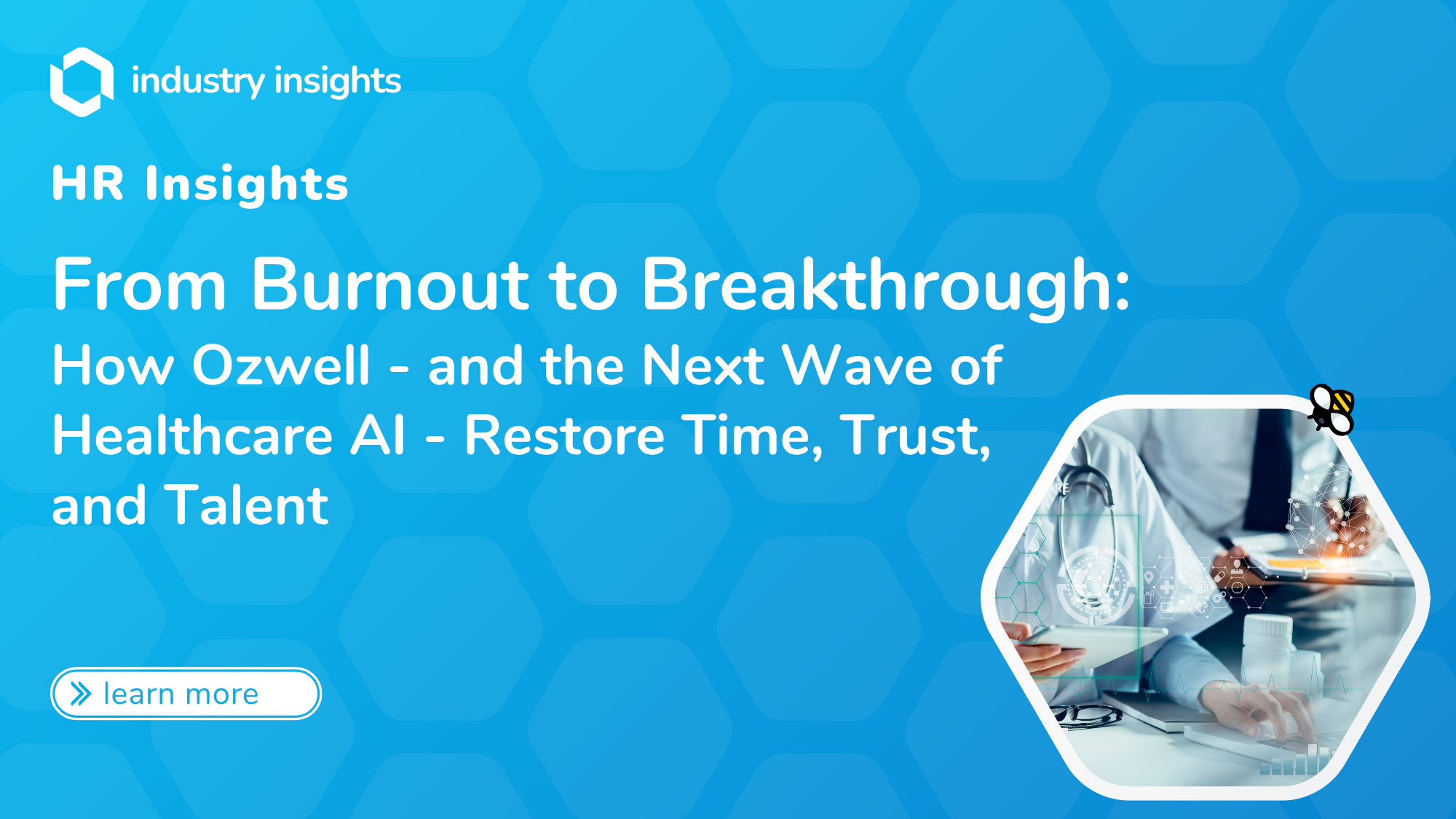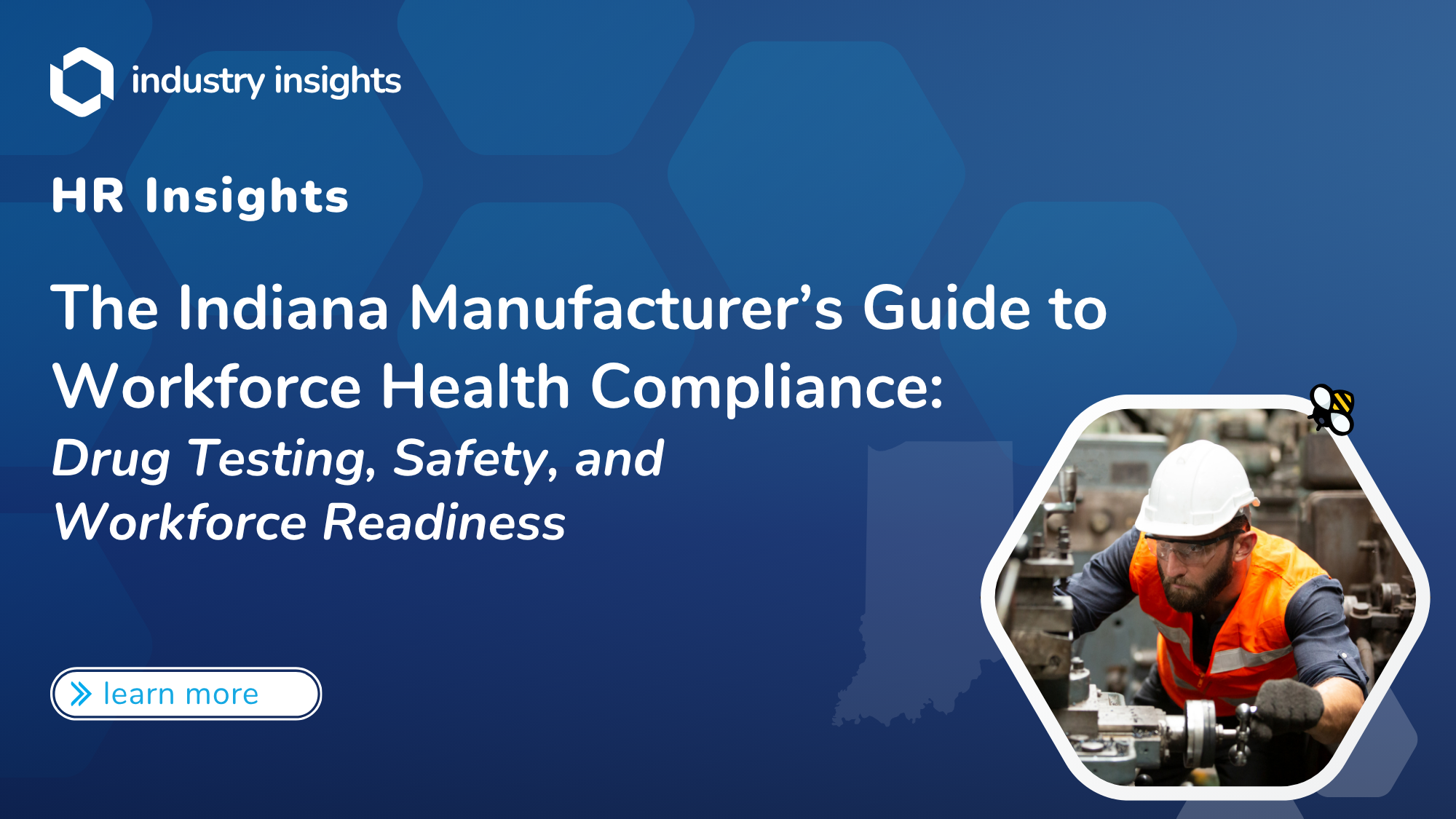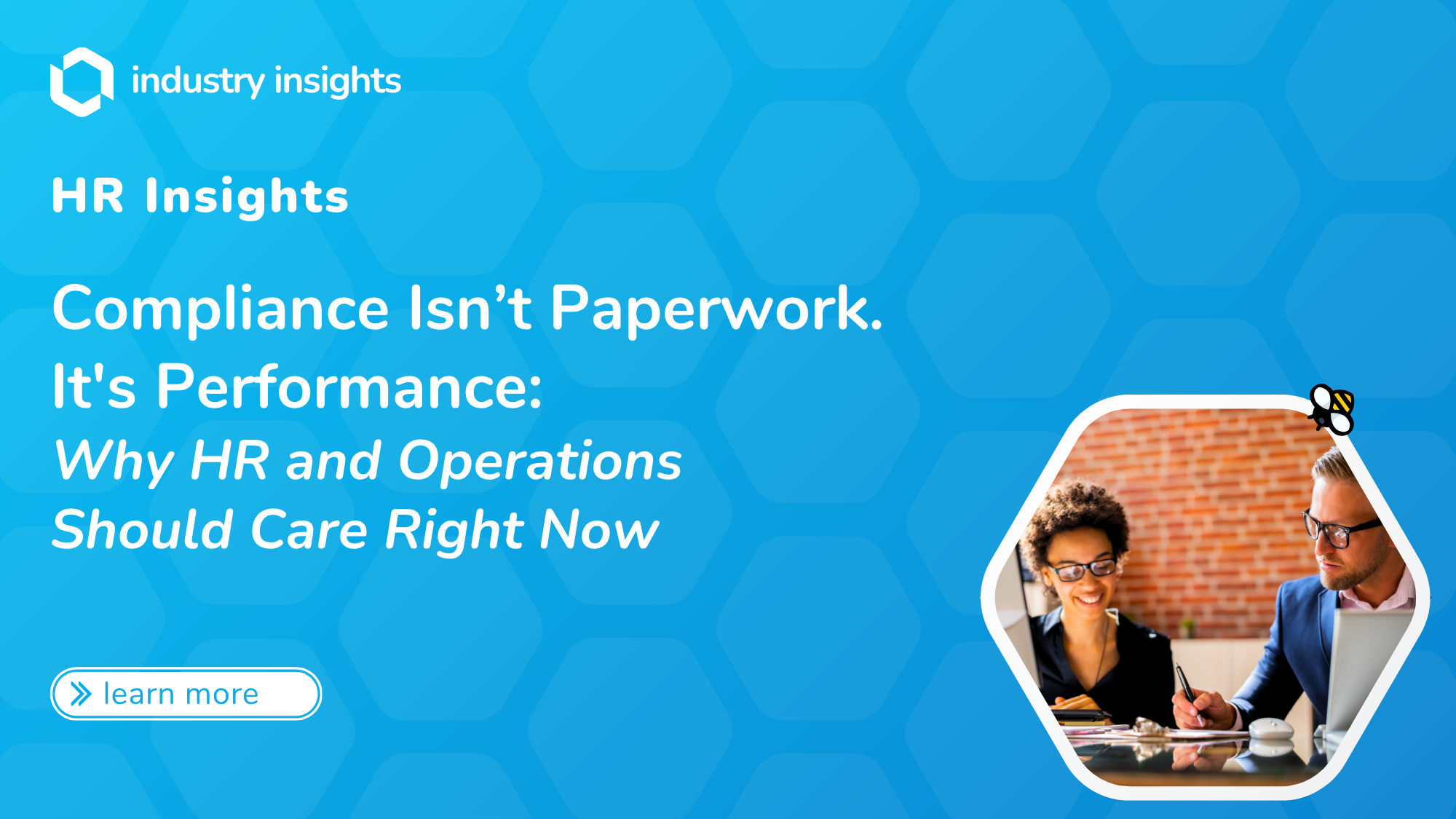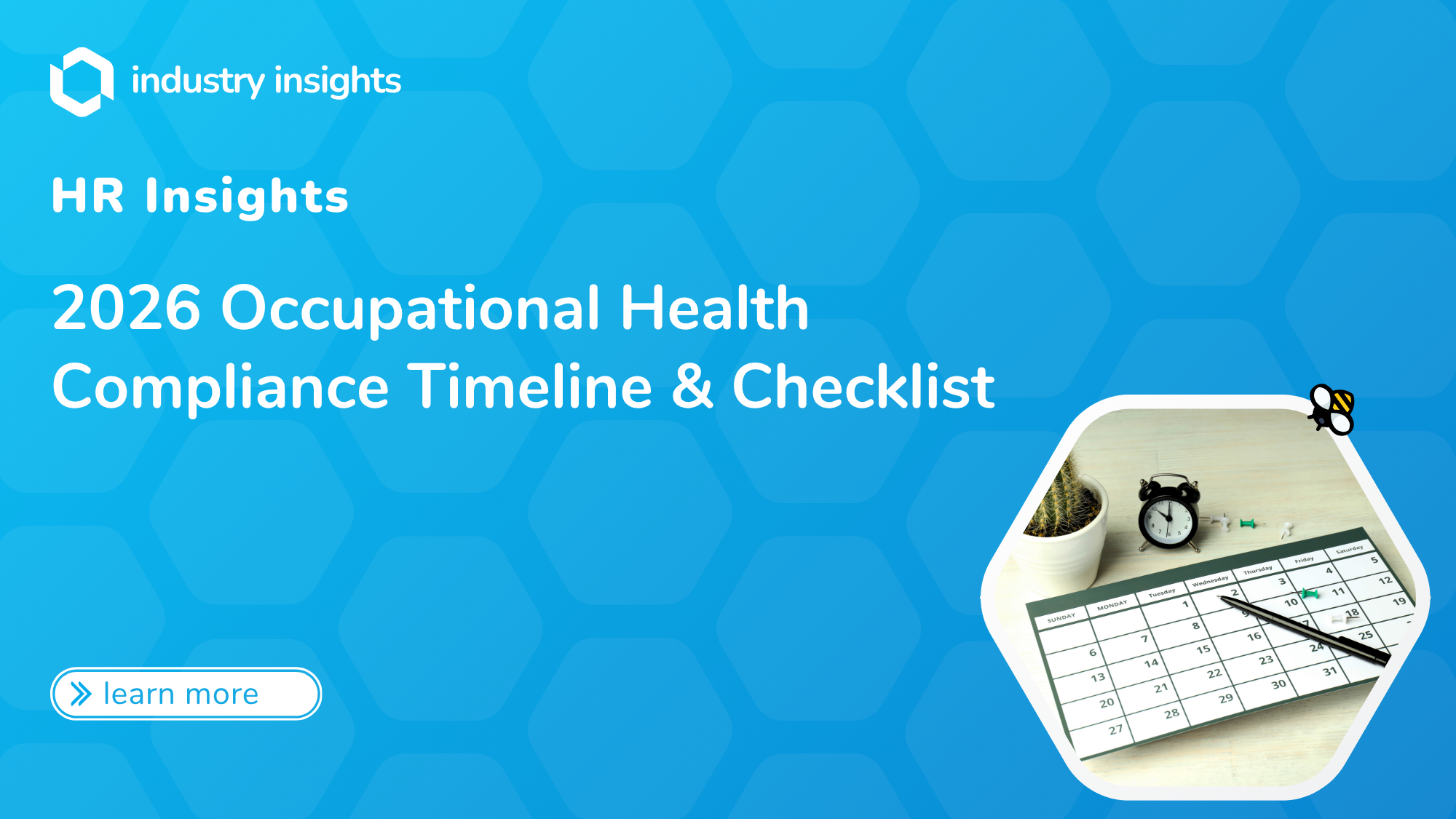Burnout isn’t a badge of honor – it’s a blinking warning light on the dashboard of U.S. health care. Clinicians now spend nearly two hours in the EHR for every hour of face‑to‑face care (American Medical Association, n.d.). Paperwork overload is pushing turnover costs above $4.6 billion a year and straining the HR budgets that have to back‑fill those empty roles (JAMA Network, 2023).
Enter Ozwell, BlueHive’s new ambient‑AI “scribe” announced in today’s press release. Think of Ozwell as the quiet note‑taker: it listens (with consent), drafts a SOAP note in seconds, and feeds it straight into the EHR. Early pilots of similar technology at Kaiser Permanente reclaimed 15,000 clinician hours in one year (American Medical Association, 2025), and industry analysts expect about 30 % of U.S. health systems to be live with ambient scribes by the end of 2025 (Artificial Healthcare, 2025).
This whitepaper shows how tools like Ozwell can move health systems from “documentation doom‑scrolling” to documentation done, giving caregivers (and HR teams) their time—and sanity—back. We’ll start with the problem, then dive into solutions, guardrails, and a 90‑day rollout plan you can steal shamelessly.
The Documentation Dilemma
For every patient hour, doctors sink almost two more into clicks and dropdowns. Many finish charts at home, racking up a median of 86 minutes of “pajama-time” each night (American Medical Association, 2025). In addition to the extra hours, physicians face cognitive overload from poorly designed EHRs that measurably erode performance and raise stress levels. Traditional scribes can lighten the load, but can cost anywhere from $31k-55k per physician per year, not counting recruiting and turnover.
Bottom line for HR: Documentation burnout fuels absenteeism and churn. Replacing a single physician can run $500k-$1 million once recruitment, onboarding, and lost revenue are tallied (American Medical Association, 2018). Ambient AI scribes, like Ozwell, attack the root cause without adding another salary line.
Meet Ozwell: Ambient AI Scribing in Action
How Ozwell Works:
- Capture: A HIPAA-secure mobile or desktop app records the exam-room (or tele-visit) audio once both parties give the thumbs-up.
- Transcribe: Speech-to-text converts dialogue on the fly – even jargon and meds
- Summarize + Structure: A large-language model drafts a SOAP note.
- Clinician Review: The draft lands inside the EHR; the provider taps approve or makes edits.
- Sync + Learn: Ozwell adapts to site-specific templates and dictation quirks, so notes get sharper each week.
Actionable Suggestions: When connected with an EHR, Ozwell can make actionable suggestions (automatically posting vitals, ordering tests, preparing medication orders, and more).
Impact at a Glance:
| Outcome | Real-World Results | Sources |
|---|---|---|
| Time saved | 15,791 hours/year | American Medical Association |
| EHR burden | -20% EHR time; -30% after-hours work | Penn DBEI |
| Burnout relief | -70% burnout; -50% doc time | UC Today |
| Patient experience | +84% clinician-reported communications | American Medical Association |
ROI: AI vs Human Scribes
Human scribes run anywhere from $31k-55k, plus recruiting and turnover costs. AI scribes like Ozwell come in at roughly $1.2k-3.6k per provider per year, with zero sick days and instant scale (Docscribe, 2025).
Translation for Finance: Swapping just five human scribes for Ozwell can free $150k annually, enough to fund 3 additional RNs or a killer coffee program (your call).
Adoption Curve – And Why You Won’t Be Early For Long
The Peterson Health Technology Institute calls ambient scribes “one of the fastest tech adoptions in healthcare history,” noting dozens of multi‑hospital rollouts in Q1 2025 alone (Peterson Health Technology Institute, 2025). Stanford Health’s enterprise‑wide deployment, following positive pilots where 96 % of clinicians found the tool easy to use, shows the momentum (Nuance MediaRoom, 2024).
Takeaway: Waiting another year means recruiting from a talent pool that now expects an AI sidekick – much like they expect an EHR badge login.
Why Ozwell Stands Out
- No Swivel-Chair Syndrome: Launches inside your existing EMR, so you don’t have to keep track of another login.
- Security First: End-to-end encryption, on-device tokenization, and automatic transcript purge per retention policy.
- Multi-Platform Access: Ozwell is not only available as an integration into your EMR, but is also available on phones/tablets as a stand-alone app as well as a browser-based interface.Human-In-The-Loop: Clinicians stay in charge; Ozwell just does the typing.
The Wider Value in Healthcare
Ozwell solves the charting crunch, but ambient scribes are only one slice of a much larger AI-enabled pie. When AI algorithms automate low-value clicks, people can move up the value chain – whether that’s nurses spending less time chasing authorizations or HR teams closing requisitions faster. New research shows that 85% of U.S. health-system and payer leaders are already piloting or scaling generative-AI tools, and 64% report positive ROI on the early use cases (McKinsey & Company, 2025).
Ozwell Makes Great Strides
BlueHive and its parent company, Medical Informatic Engineering, are pleased to announce that Ozwell (formerly BlueHive AI) is the first Ambient AI application to receive Drummond Public Decision Support Intervention (pDSI) Certification – meaning its recommendations meed ONC’s transparency, safety, and bias-testing benchmarks. For more information, you can check out the press release from BlueHive, or the press release from Drummond.
BlueHive plans to implement Ozwell into its own Provider and Employer platforms in the coming days, so stay tuned for more information at bluehive.com!
Sources
American Medical Association. (n.d.). Allocation of physician time in ambulatory practice. https://www.ama-assn.org/practice-management/digital-health/allocation-physician-time-ambulatory-practice
American Medical Association. (2018, October 11). How much physician burnout is costing your organization. https://www.ama-assn.org/practice-management/physician-health/how-much-physician-burnout-costing-your-organization
American Medical Association. (2025, June 12). AI scribes save 15,000 hours—and restore the human side of medicine. https://www.ama-assn.org/practice-management/digital-health/ai-scribes-save-15000-hours-and-restore-human-side-medicine
Artificial Healthcare. (2025). Beyond the transcript: The C‑suite playbook for AI medical scribe implementation in 2025. https://artificialhealthcare.ai/beyond-the-transcript-the-c-suite-playbook-for-ai-medical-scribe-implementation-in-2025/
BlueHive. (2025, July 15). Ozwell AI achieves Drummond pDSI certification. https://bluehive.com/2025/07/15/ozwell-ai-achieves-drummond-pdsi-certification/
DocScribe Team. (2025, May 7). Slash documentation costs: AI vs human medical scribes ROI showdown (+ hybrid model blueprint). https://www.docscribe.health/blogs/slash-documentation-costs-ai-vs-human-medical-scribes-roi-showdown-hybrid-model-blueprint
Drummond Group, LLC. (2025, July 15). Ozwell first to achieve Drummond pDSI‑Risk certification for AI‑powered health IT [Press release]. EIN Presswire. https://www.einpresswire.com/article/830530519/ozwell-first-to-achieve-drummond-pdsi-risk-certification-for-ai-powered-health-it
Khullar, D. (2023, March 24). Burnout, professionalism, and the quality of U.S. health care. JAMA Health Forum, 4(3), e230024. https://jamanetwork.com/journals/jama-health-forum/fullarticle/2802872
McKinsey & Company. (2025, March 26). Generative AI in healthcare: Current trends and future outlook. https://www.mckinsey.com/industries/healthcare/our-insights/generative-ai-in-healthcare-current-trends-and-future-outlook
Nuance Communications. (2024, March 11). DAX Copilot to automate the creation of clinical documentation, reduce physician burnout, and expand access to care deployed enterprise‑wide at Stanford Health Care [Press release]. https://news.nuance.com/2024-03-11-DAX-Copilot-to-Automate-the-Creation-of-Clinical-Documentation%2C-Reduce-Physician-Burnout%2C-and-Expand-Access-to-Care-Deployed-Enterprise-Wide-at-Stanford-Health-Care
Penn Medicine Department of Biostatistics, Epidemiology & Informatics. (2025, February 24). AI ‘scribe’ reduces clinician workload, improves patient interaction [Press release]. https://dbei.med.upenn.edu/press-release/ai-scribe-reduces-clinician-workload-improves-patient-interaction/
Peterson Health Technology Institute. (2025, March 25). Leading health systems: AI‑powered scribes alleviate clinician burnout; financial impact unclear. https://phti.org/announcement/ai-scribes-reduce-clinician-burnout/Stephen, J. (2023, September 28). Nuance’s DAX Copilot for healthcare is generally available. UC Today. https://www.uctoday.com/unified-communications/cpaas/nuances-dax-copilot-for-healthcare-is-generally-available/




